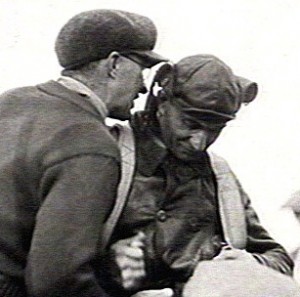Coast-to-coast, dawn-to-dusk, in 1924
Lieutenant Russell Maughan, a Utah-born Army pilot, winner of the Distinguished Service Cross in World War I, and holder of the world aerial speed record in 1923, tried twice that year to become the first person to fly cross-country in a single day. Both times he failed, brought down by a clogged g…

Lieutenant Russell Maughan, a Utah-born Army pilot, winner of the Distinguished Service Cross in World War I, and holder of the world aerial speed record in 1923, tried twice that year to become the first person to fly cross-country in a single day. Both times he failed, brought down by a clogged gas line and an oil leak.
Maughan's final try, on this day in 1924, succeeded. For his third attempt, he squeezed as much time as possible from “a single day” by flying in mid-summer (the original plan was for June 21) and taking off at 4:00 a.m., after dawn but before sunrise, and going until dusk (actually a little past) rather than sundown. That bought him an extra two hours in his Curtiss PW-8 pursuit plane.
He also cut his four planned rest stops—in Dayton, Ohio; St. Joseph, Missouri; Cheyenne, Wyoming; and Salduro, Utah—from half an hour to just ten minutes each.
Maughan took 21 hours and 47 minutes to cover the 2,670 miles from Mitchel Field in Long Island to Crissy Field on the Presidio in San Francisco. "I virtually ran along the ground for the greater part of the trip," he recalled. "Sometimes, and quite frequently at that, I ran within ten feet of the ground and just crawled over the tops of houses and trees."
At Crissy Field, he was greeted by a crowd of thousands and carried on his fellow airmen's shoulders to their headquarters building. Maughan told reporters, “I feel fine now; but after the first six or seven hours of flying I couldn’t keep food down. I was sick, O, I don’t know, maybe two or three dozen times. I didn’t eat at all on the trip. I couldn’t.”
The cross-country flight was more than just a stunt. It was meant to help persuade lawmakers to appropriate more money for military aviation by showing that airplanes could reach anywhere in the country, quickly. Said Maughan in a speech a few days later, "The real reason for my flight across the United States in the sunlight hours of one day was that the chief of the Air Service wanted to show Congress just how unprotected are the people of the Pacific Coast."